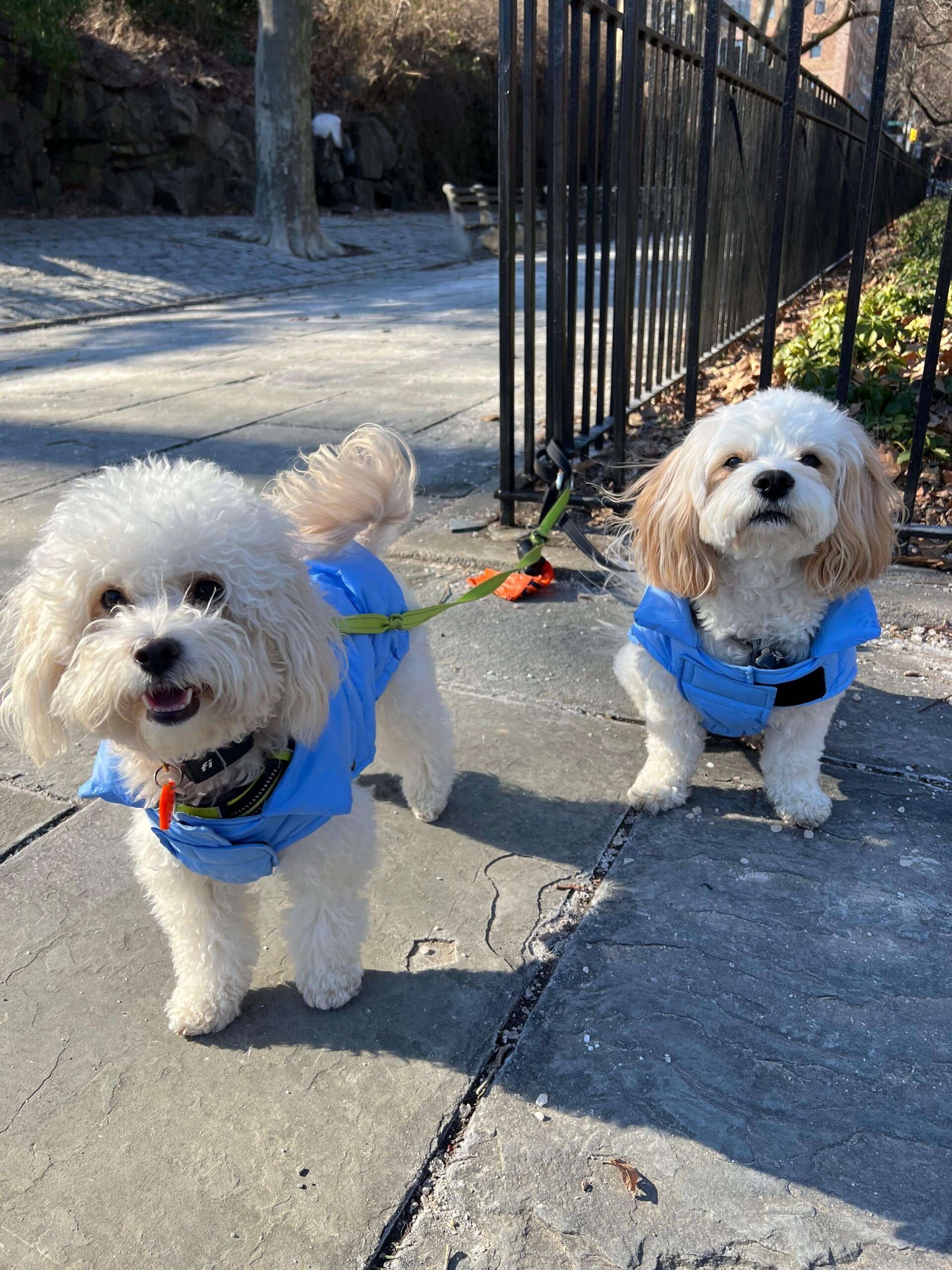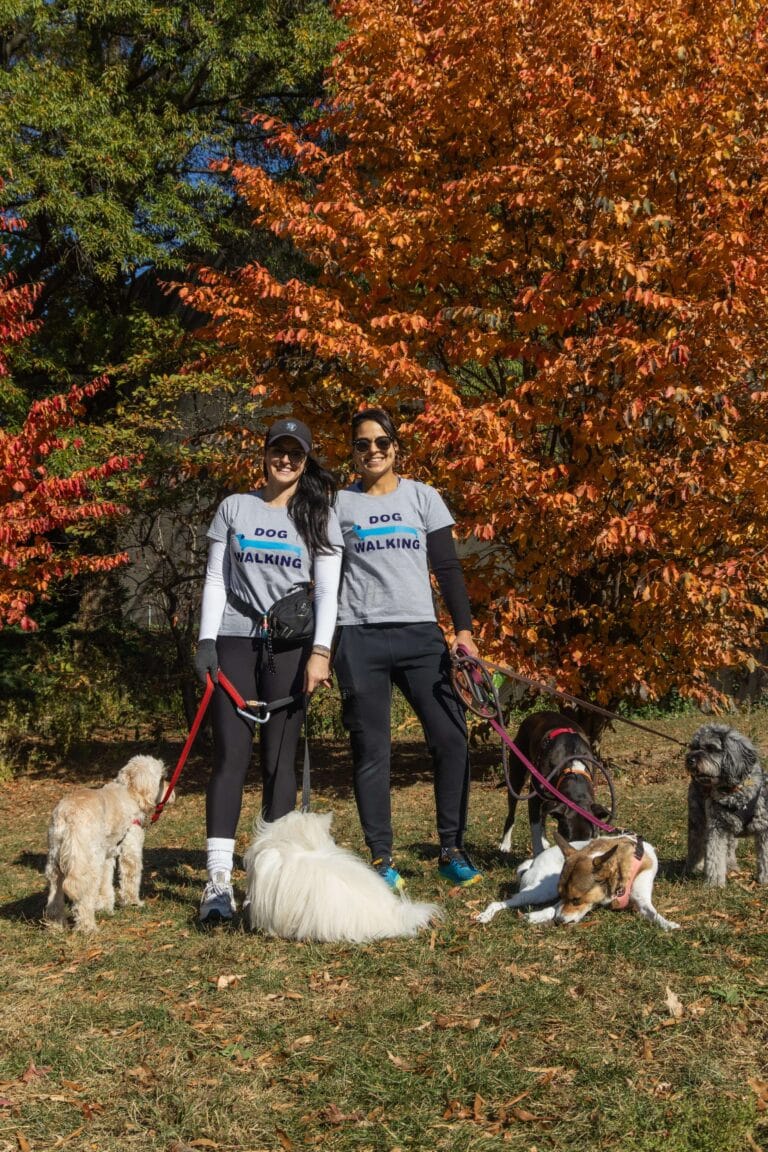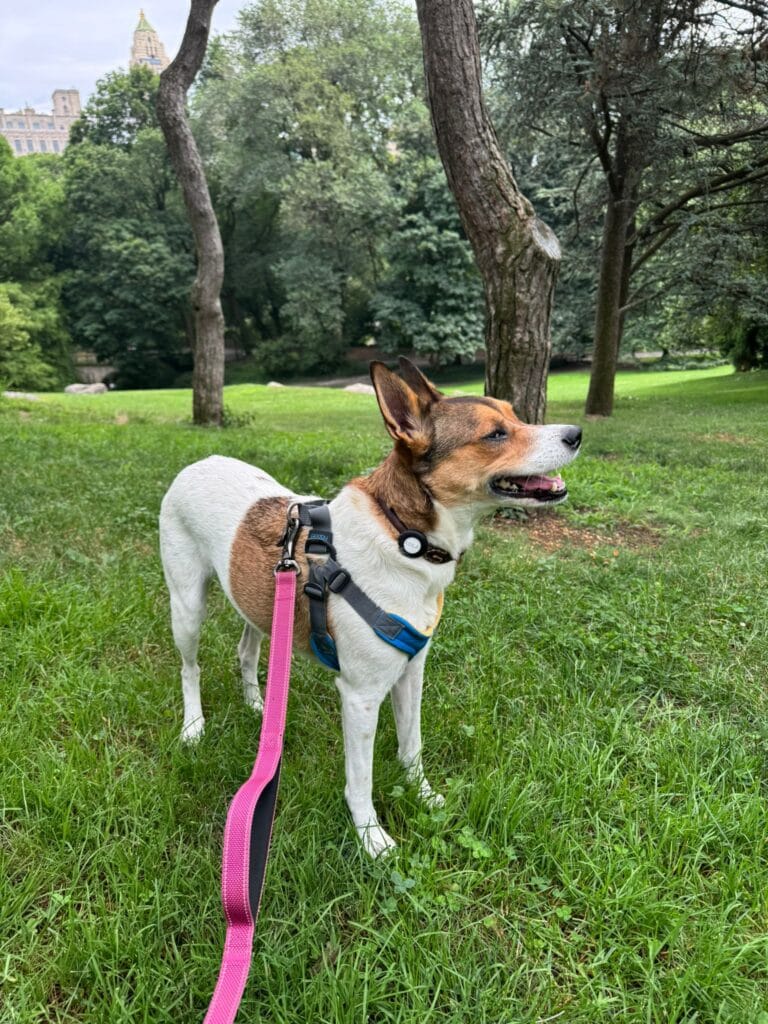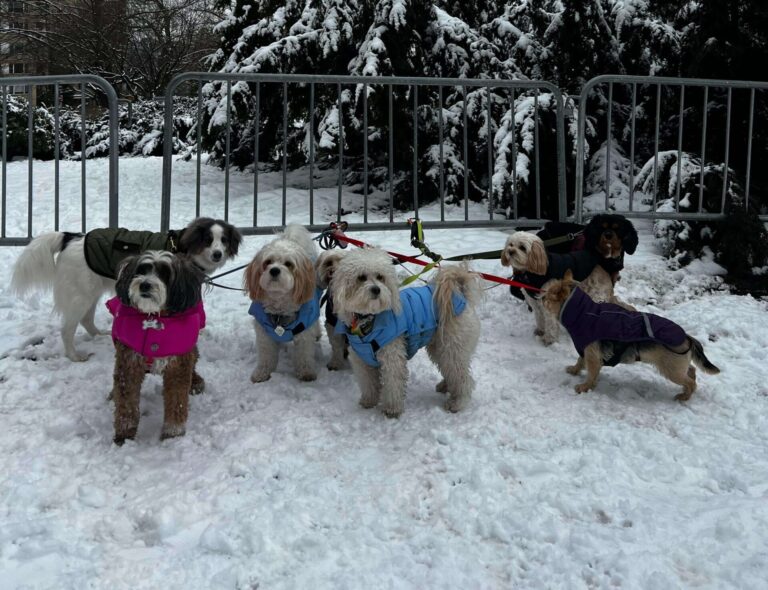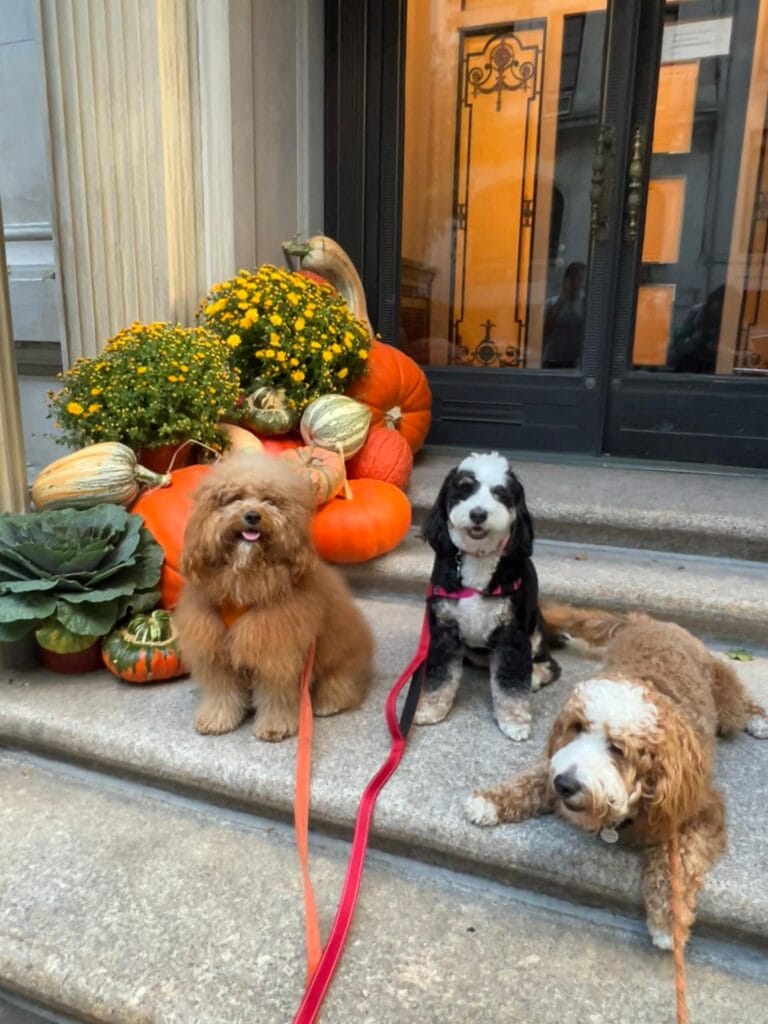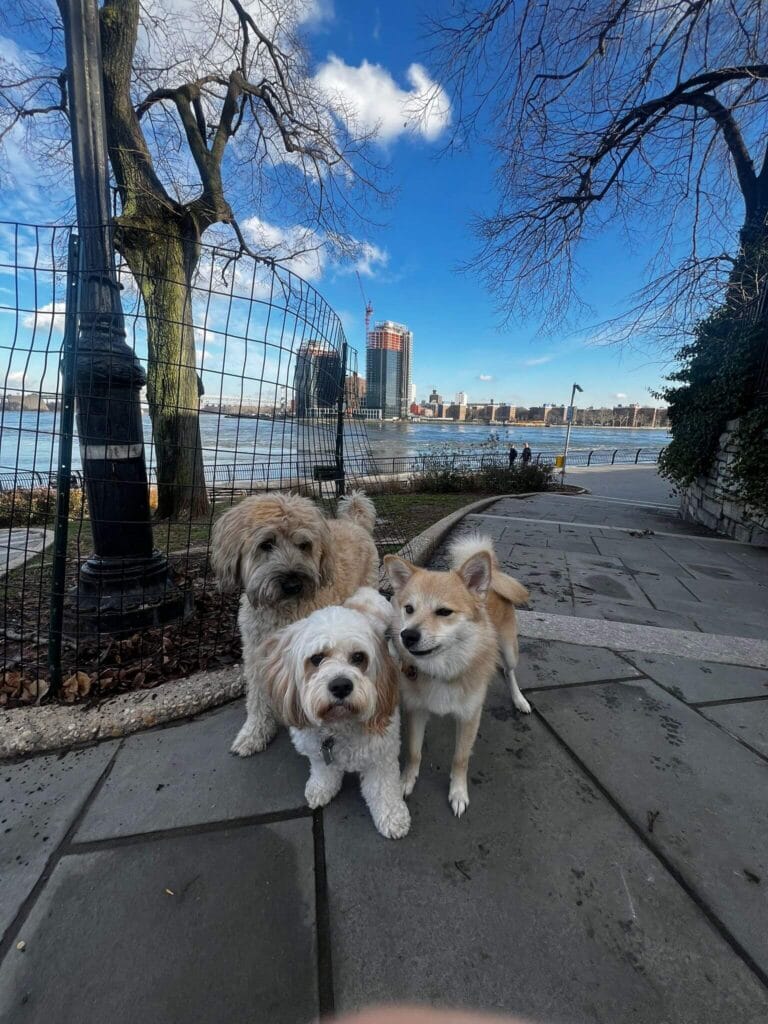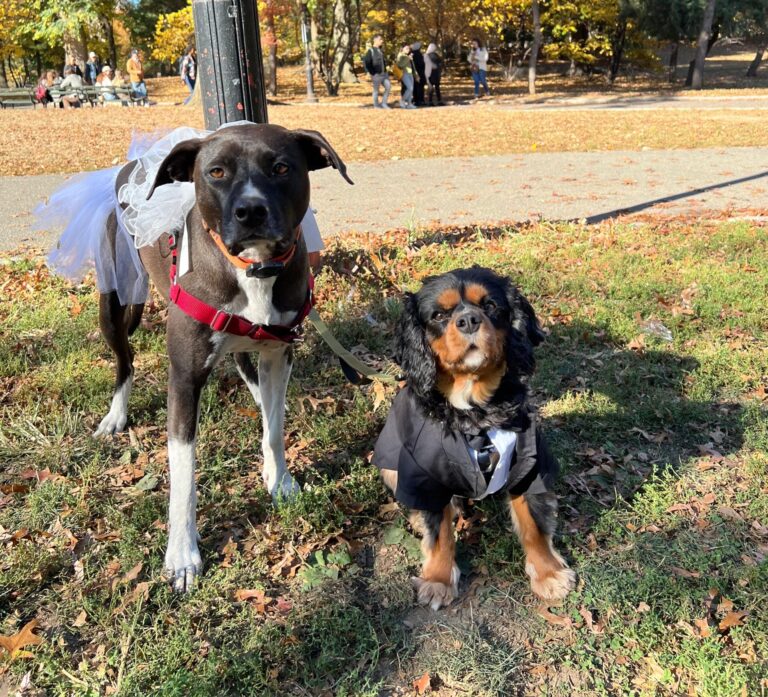Did you know that 54% of Manhattan dog owners never walk their pups for more than 15 minutes at a time? That’s like ordering a gourmet meal and only taking two bites.
Your furry best friend deserves better, and honestly, so do you. This guide will show you exactly how regular dog walking in Manhattan NYC transforms both your health and your pup’s wellbeing in ways you never imagined.
When you’re dodging tourists in Central Park or navigating the concrete jungle with your four-legged companion, you’re not just checking “walk the dog” off your to-do list – you’re investing in a longer, happier life for both of you.
But here’s what most Manhattan pet parents miss about these daily strolls, and it might be the game-changer your routine desperately needs…
Physical Health Benefits of Dog Walking in Manhattan
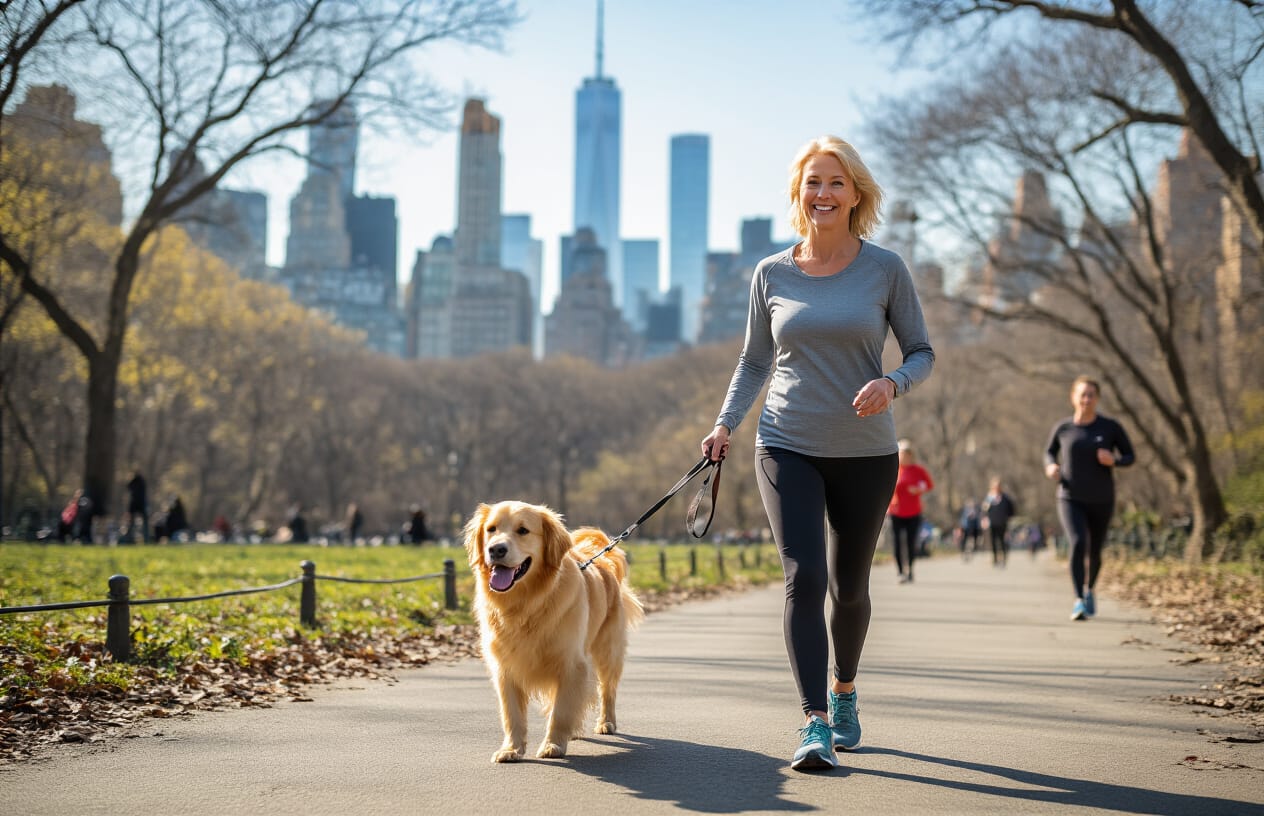
Cardiovascular Improvements from Regular Walking Routes
Ever noticed how Manhattan’s grid system practically begs you to walk more? Those 20-block strolls with your four-legged friend add up fast. Walking your dog through Central Park or along the Hudson River Greenway for just 30 minutes daily gets your heart pumping at the perfect rate – enough to strengthen your heart without overdoing it.
If you’re looking to explore even more scenic and dog-friendly paths in your neighborhood, check out our guide to the Top Dog Walking Routes in Manhattan’s Upper East Side.
Dog owners in Manhattan walk an average of 5 miles more per week than non-dog owners. That’s not just good for Fido – it’s cutting your risk of heart disease by up to 30%, according to the American Heart Association.
The best part? The Manhattan landscape offers natural interval training. Think about it: stopping at crosswalks, picking up the pace to make the light on 5th Avenue, then slowing down to let your pup sniff around Madison Square Park. Your heart rate varies naturally, creating the perfect cardiovascular workout without ever setting foot in a gym.
Weight Management for Both Dogs and Owners
Dog walking burns serious calories. A 160-pound person walking at a moderate pace through the Upper West Side will burn about 170 calories in just 30 minutes. According to Mayo Clinic, regular walking is a simple, effective way to maintain a healthy weight. Do that daily and you’re looking at dropping a pound every three weeks without changing anything else.
And let’s talk about your furry friend. With limited yard space in Manhattan apartments, daily walks aren’t optional – they’re essential for keeping your pup at a healthy weight. To understand the best walking frequency for your dog’s health and happiness, check out our detailed guide on How Often Should Your Dog Be Walked in Manhattan?
A recent study of Manhattan dog owners showed those who walked their dogs regularly were 34% more likely to meet recommended exercise guidelines than those who outsourced the walking.
Increased Strength and Flexibility
The varying terrain of Manhattan naturally builds muscle. Walking uphill towards Central Park North strengthens your calves and glutes. Navigating crowded sidewalks in Midtown improves your balance and core strength.
Dog walking also improves flexibility – all that bending to pick up after your pup, reaching for the leash, and quick direction changes when your dog spots a squirrel in Washington Square Park keeps your joints limber and your muscles engaged.
The uneven sidewalks of the West Village might seem annoying, but they’re actually creating micro-adjustments in your walking pattern that strengthen stabilizing muscles most gym workouts completely miss.
Mental Health Advantages for Manhattan Dog Owners
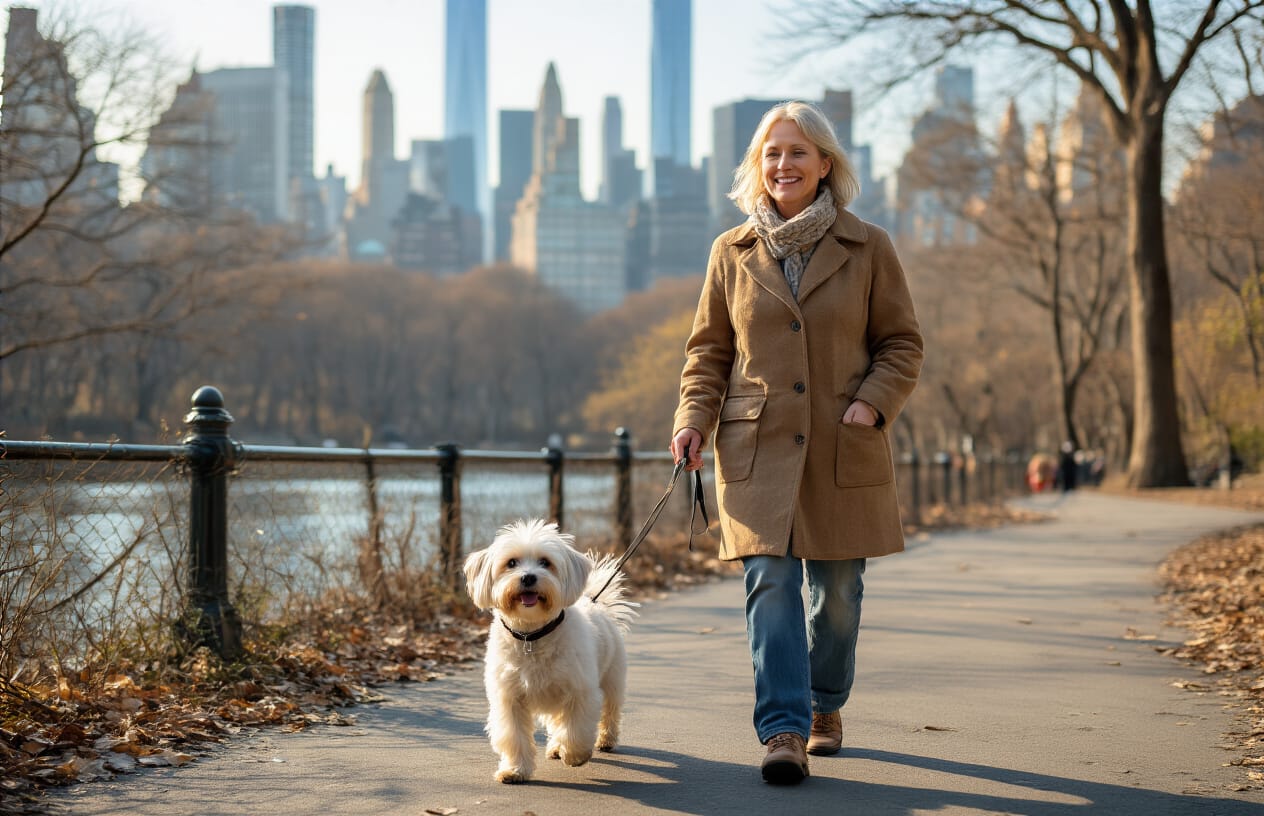
Stress Reduction in the Urban Environment
Manhattan life hits different. The constant honking, crowds pushing past you on sidewalks, and that never-ending city hum can make your stress levels skyrocket. This is where your furry friend comes in clutch.
Walking your dog through Central Park or along the Hudson River gives your brain a much-needed break from the concrete jungle. That 30-minute stroll forces you to step away from work emails and actually breathe. Dog owners in Manhattan report feeling their shoulders drop and tension melt away just minutes into their walks.
Unlike hitting the gym, dog walking doesn’t feel like another task on your to-do list. It’s just you, your pup, and whatever podcast you’re into lately.
Anxiety Relief Through Nature Connection
Green space in Manhattan is precious, and dog walking is your ticket to claiming it. Those pockets of nature scattered throughout the city—Madison Square Park, Washington Square, or even the small tree-lined streets of the West Village—become your daily dose of calm.
The science backs this up. Just five minutes of “green time” cuts anxiety levels dramatically. When your dog stops to sniff every tree (so annoying, yet so adorable), they’re actually forcing you to slow down and notice things. Studies highlighted by the Anxiety and Depression Association of America confirm the mental health benefits of spending time in nature.
Manhattan dog owners who walk regularly report feeling more grounded and present, even during the most chaotic work weeks.
Mood Enhancement and Endorphin Release
Bad day at work? Dog walk. Fight with your partner? Dog walk. Feeling blah for no reason? Dog walk.
The combination of physical movement and your dog’s ridiculous happy face triggers serious mood-boosting chemicals in your brain. Endorphins start flowing about 10 minutes into your walk, creating that natural high that can’t be matched by doom-scrolling on your couch.
Manhattan dog walkers form impromptu communities too. Those regular faces you see at the dog run become head-nod acquaintances, then small-talk friends, then actual connections. In a city where loneliness can hit hard, these micro-interactions matter—and having the right person by your side on those walks makes all the difference. If you’re considering hiring help, check out our guide on Choosing the Best Dog Walker in NYC: A Comprehensive Guide for everything you need to know.
Social Benefits in NYC’s Dog-Friendly Community
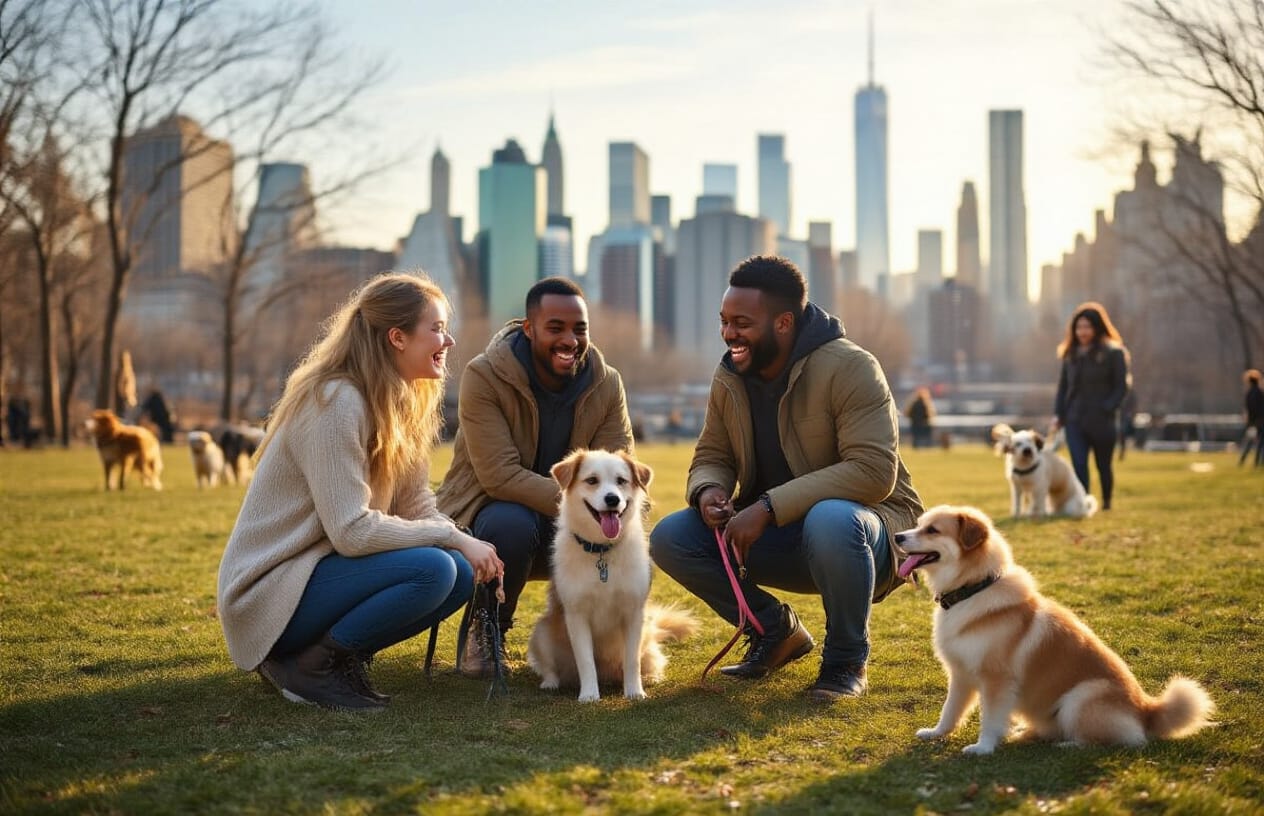
Building Neighborhood Connections at Dog Parks
Ever noticed how easy it is to strike up a conversation at Madison Square Park’s dog run? That’s no accident. Manhattan’s dog parks aren’t just for your pup—they’re social hubs that break down the invisible walls between neighbors. For more on NYC’s dog-friendly parks and rules, check out NYC Parks official site.
Most New Yorkers barely nod at the person living next door, but bring a dog into the mix, and suddenly you’re chatting like old friends. Tompkins Square Dog Run, Chelsea Waterside, and Carl Schurz Park become your neighborhood’s living room where faces turn familiar after just a few visits.
Dog parks create these perfect low-pressure social situations. While your furry friend runs around, you’re free to chat about anything from the weather to local restaurant recommendations. No awkward silence—there’s always a dog doing something conversation-worthy!
Creating Friendships with Fellow Dog Walkers
The regular dog walking circuit in Manhattan creates its own special kind of friendship. These aren’t just casual acquaintances—they’re people who show up rain or shine, just like you do. And depending on your lifestyle and your pup’s personality, choosing between Private vs. Group Dog Walks: Which is Right for Your NYC Pup? can shape the kind of community (and connection) you build along the way.
Morning dog walkers form particularly tight bonds. There’s something about that 6:30 AM commitment that builds mutual respect. You see each other at your most authentic—sometimes in pajamas under winter coats or without makeup—and that breeds a unique kind of trust.
Many Manhattan residents report that their dog-walking friends became their emergency contacts, plant-waterers when they travel, and even close confidants. The shared experience of navigating the city with a four-legged friend creates an instant understanding between strangers.
Developing a Sense of Community in a Big City
Manhattan can feel overwhelming and anonymous. Eight million people rushing past you daily doesn’t exactly scream “tight-knit community.” But regular dog walking completely transforms that experience.
Your daily routes become your village. The doormen who greet your dog by name, the barista who starts preparing your usual when she spots you across the street, the other dog owners who share treats—they all form your urban tribe.
This sense of belonging is priceless in a city where isolation is a real concern. Your dog essentially acts as your social ambassador, forcing you to engage with the neighborhood in ways you might otherwise avoid.
In neighborhoods like the Upper West Side and East Village, seasonal dog events further strengthen these bonds with costume contests and adoption drives becoming annual traditions that neighbors look forward to together.
Practical Health Tips for Manhattan Dog Walkers
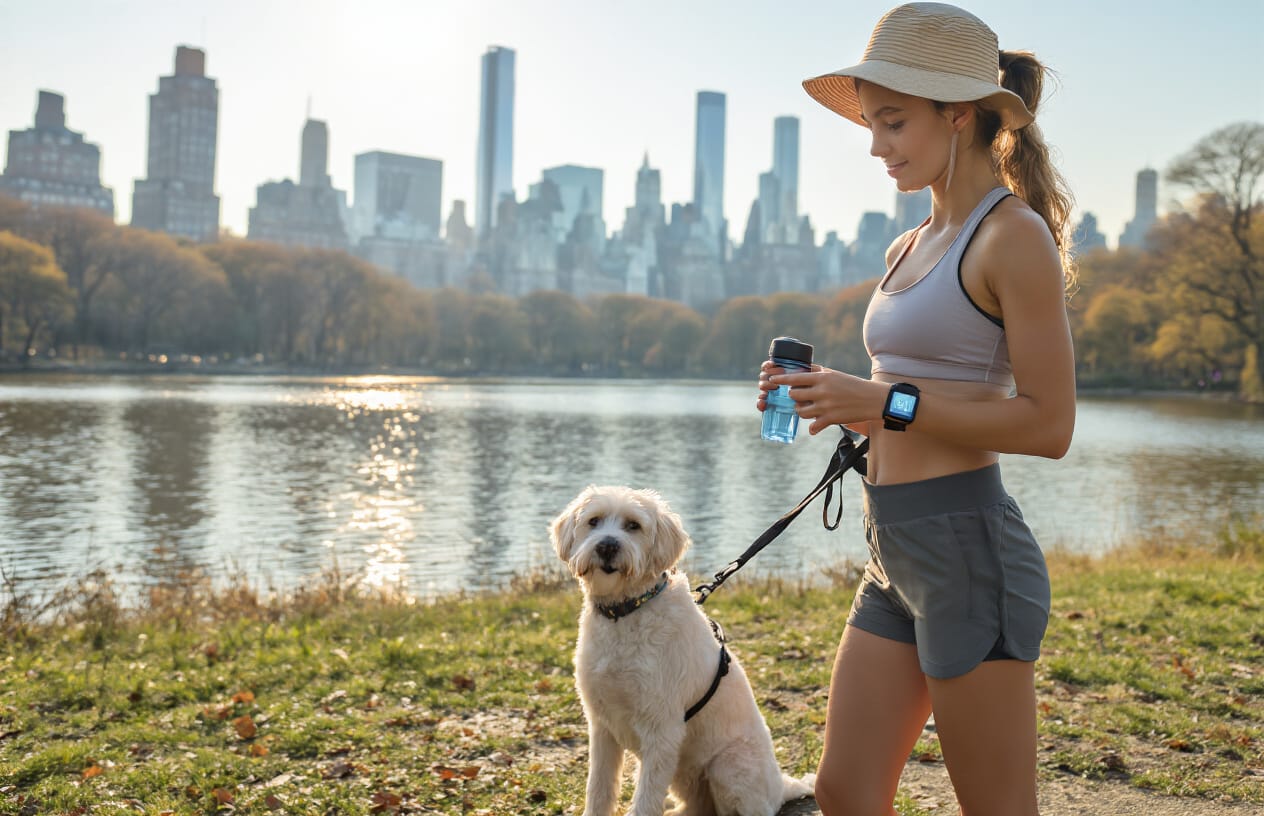
Navigating Urban Challenges Safely
Manhattan’s sidewalks aren’t exactly peaceful forest trails. They’re bustling, crowded, and sometimes chaotic. So how do you keep walks beneficial rather than stressful? It starts with smart strategies—check out our tips for Staying Safe: Dog Walking Tips for Busy NYC Streets to make every outing smoother and safer for both you and your pup.
First off, invest in a proper 4-6 foot leash. Those retractable ones? Total nightmare in NYC crowds. You need control, not a dog zooming 20 feet ahead weaving through pedestrians.
Time your walks strategically. Early mornings (5-7 AM) offer quieter sidewalks and fewer delivery trucks. Late evenings after 8 PM can work too. Avoid the lunch rush hour when everyone’s power-walking to grab their salads.
Cross streets at corners only, and always watch for cyclists who think traffic lights are just friendly suggestions. Those delivery e-bikes come out of nowhere!
Weather Considerations for Year-Round Benefits
Summer in Manhattan feels like walking in soup. Winter feels like trekking across the Arctic. For tips on how to adjust your routine and keep your dog comfortable year-round, check out our detailed guide on Adapting Dog Walks for Manhattan’s Seasons: A Guide. But your dog still needs exercise.
During heatwaves (90°F+), walk before 9 AM or after 8 PM when pavement temperatures drop. The concrete can reach 140°F midday – hot enough to fry an egg or burn paws.
Winter brings its own challenges. Salt and chemical de-icers destroy paw pads. Snow between toes causes painful ice balls. Shorter, more frequent walks often work better than one long freezing adventure.
Rain shouldn’t stop you either. A quick-dry dog towel tucked in your jacket pocket saves your apartment floors from muddy disasters.
Protecting Paws and Promoting Hydration
Manhattan sidewalks are brutal on paws. Glass, debris, mysteriously sticky substances – they’re all waiting to meet your dog’s feet. For tips on how to protect your pet’s paws and keep them safe, the ASPCA offers practical advice for urban dog owners.
Paw balm isn’t just for winter. Apply it year-round to prevent cracking and provide a protective barrier against urban grime. Mushers Secret works wonders.
Always carry water, even for short walks. Those cute collapsible silicone bowls weigh nothing and fold flat in your pocket. For a complete checklist of must-have items to keep your pup safe and comfortable, check out our guide on Essential Gear for Dog Walks in NYC: What to Pack. A dehydrated dog overheats quickly, especially when humidity spikes.
After walks, do a quick paw check and wipe-down. It removes city grime, salt, and whatever that weird substance was near the construction site.
Conclusion

Finding time to walk your dog in Manhattan isn’t just good for your furry friend—it’s a tremendous health boost for you too. Regular walks improve cardiovascular health, help maintain healthy weight, and strengthen muscles while exploring the city’s beautiful parks and pathways. These outings also significantly reduce stress, anxiety, and depression while fostering mindfulness as you connect with your pet in the urban environment.
Manhattan’s dog-friendly community transforms these walks into social opportunities, helping you build connections with fellow dog owners and potentially reducing the isolation of city living. Remember to stay hydrated, protect yourself from weather extremes, and keep safety in mind as you explore. By making dog walking a consistent part of your Manhattan lifestyle, you’re investing not just in your pet’s wellbeing, but in your own physical, mental, and social health.
Too busy to walk your dog every day? Let Andreia’s Dogs help! Our professional, safety-focused dog walking team serves the Upper East Side with personalized care, flexible schedules, and updates you can trust. Give your pup the exercise they need—without the stress. Call Andreia at (848) 480-9452 or email andreiasdogs@gmail.com to schedule a meet-and-greet today.
Frequently Asked Questions (FAQs)
Most healthy adult dogs benefit from at least 30 minutes to an hour of walking daily. In Manhattan, this can be split into shorter walks throughout the day, depending on your schedule and your dog’s energy level. Regular walks help with weight control, mental stimulation, and behavior management.
While quick bathroom breaks are necessary, they aren’t enough for your dog’s physical and mental well-being. Dogs need longer, engaging walks to burn energy, explore their environment, and stay healthy—especially in apartment living.
Yes, but precautions are essential. In summer, walk early or late to avoid hot pavement, and always carry water. In winter, use paw protection against salt and cold, and opt for shorter walks with warming gear if needed. Andreia’s Dogs adjusts routes and timing based on weather conditions to keep your dog safe year-round.
Regular dog walking reduces stress, eases anxiety, boosts your mood, and helps you feel more connected to your surroundings. For your dog, it provides stimulation, socialization, and a consistent routine—all key for emotional well-being.
Absolutely. Andreia’s Dogs offers professional, reliable dog walking services in the Upper East Side, with flexible schedules and real-time communication. If your routine is hectic, we’ll make sure your dog still gets the care, exercise, and companionship they need.

